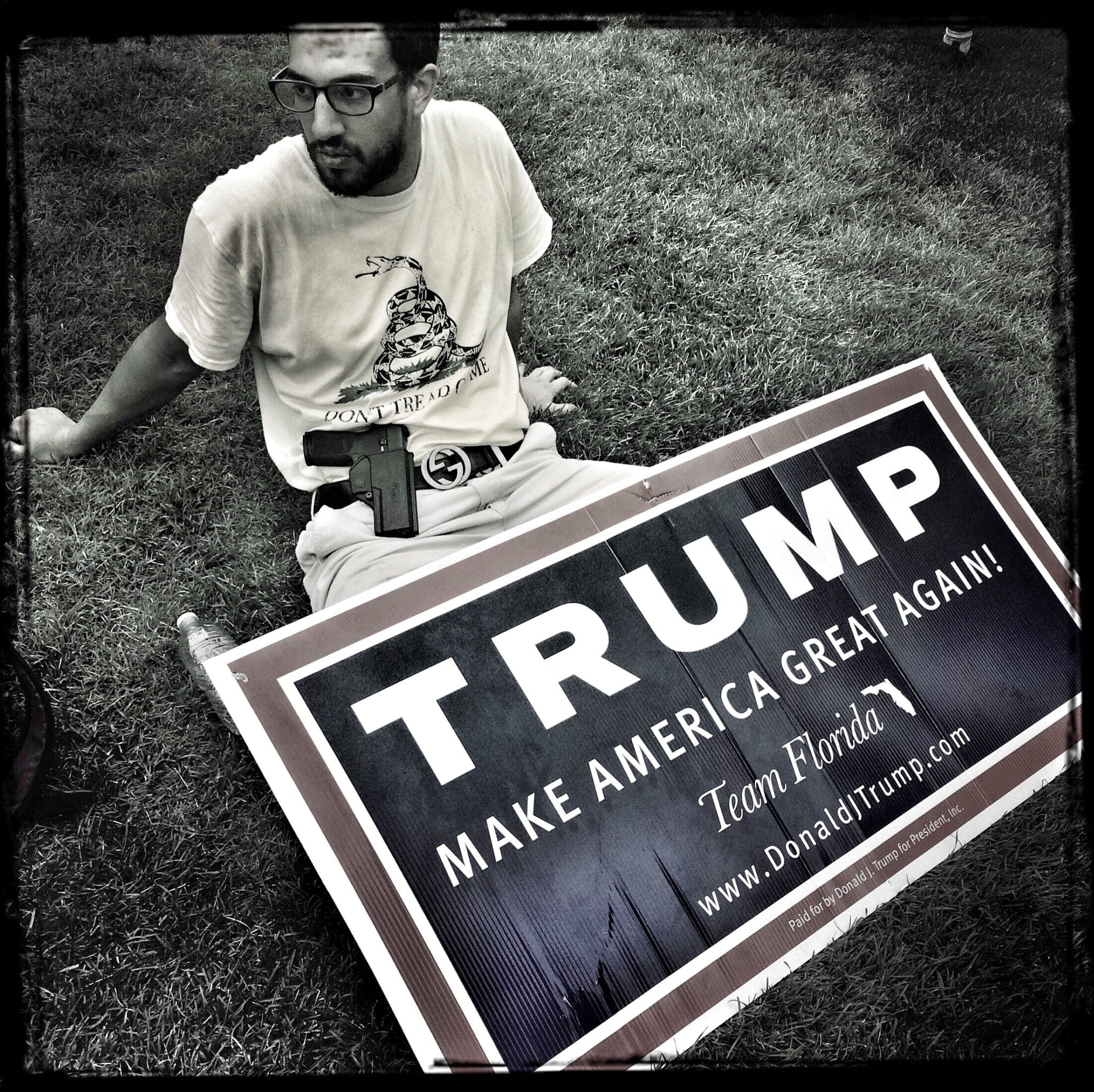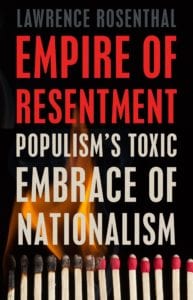
By Lawrence Rosenthal
 In an interview with Sarah Posner at the 2016 Republican nominating convention, Steve Bannon famously boasted that the online daily he headed, Breitbart News, was “the platform of the alt-right.” Plainly, the defining characteristic of the alt-right is its white identity politics. Yet Bannon denies the white nationalist element of his ideology and insists that what he stands for goes by the name either “populist nationalism” or “economic populism”—the scourge solely of the globalists who would level national cultures. At a CPAC (Conservative Political Action Conference) appearance in February 2017, while he was still a senior advisor in the Trump administration, Bannon made explicit his plans to gut globalist power on the home front by undermining what he called the administrative state, the professional bureaucracy that manages federal agencies and programs. Trump effectively institutionalized the alt-right when he made Bannon his campaign’s “CEO” in August 2016 and then installed him in the administration.
In an interview with Sarah Posner at the 2016 Republican nominating convention, Steve Bannon famously boasted that the online daily he headed, Breitbart News, was “the platform of the alt-right.” Plainly, the defining characteristic of the alt-right is its white identity politics. Yet Bannon denies the white nationalist element of his ideology and insists that what he stands for goes by the name either “populist nationalism” or “economic populism”—the scourge solely of the globalists who would level national cultures. At a CPAC (Conservative Political Action Conference) appearance in February 2017, while he was still a senior advisor in the Trump administration, Bannon made explicit his plans to gut globalist power on the home front by undermining what he called the administrative state, the professional bureaucracy that manages federal agencies and programs. Trump effectively institutionalized the alt-right when he made Bannon his campaign’s “CEO” in August 2016 and then installed him in the administration.
Electorally and as president, Trump as a campaigner is not running on the economic arguments. He is running on the fear.
This duality between an economic populist argument on the one hand, and an othering nationalist argument (that turns white nationalist for alt-right-ers) on the other hand is a profound yet functional dissonance that threads through the whole of the Trump phenomenon in the USA and illiberalism abroad. Populist nationalism is presented as an economic solution for a “left behind” working class as a country’s elites, both left and right, have hewed more and more to a globalist agenda; nationalism is globalism’s very opposite, and its remedy. But this is not the argument that these movements rely on to win over voters. That argument is the scapegoating argument. It is the red meat of these movements. It is the argument that puts the blame for economic and social “carnage” (in Trump’s terminology) on the shoulders of immigrants. In theory, Trump’s populist nationalism argument is about curing economic conditions. But selling his populism is about fear. Electorally and as president, Trump as a campaigner is not running on the economic arguments. He is running on the fear.
This dual face is a fundamental component of Trump’s success. Talk to a Trump supporter and you will hear talk of jobs moving overseas and immigrants on the welfare rolls. But go to a Trump rally and that supporter will cheer him as he thunders about invading caravans and reciting “The Snake,” describing immigrants as criminals and lowlifes and threats to national security. Tales of the lethal danger Americans face at the hands of immigrants regularly make it into the most august administration’s statements—like Trump’s inaugural speech or his State of the Union speeches.
The presence of these two components—economic populism and scapegoating—is a novelty in contemporary American politics. It breaks down the clear distinction between left and right populist movements—the left based on resentment toward financial elites, and the right based on resentment toward cultural elites. The hybrid political movement it introduces is at the heart of Steve Bannon’s political vision. Bannon’s project for American politics is that the Trump coalition, which in his view blends the working class with traditional right-wing populists, will establish itself as an enduring movement, and its role will be the successor to the Tea Party. Using the Tea Party tactics of primarying and obstruction, Bannon sees the Trump movement adopting a kingmaker role in the Republican Party, enforcing its ideology on national and state candidates alike.
Trump effectively institutionalized the alt-right when he made Bannon his campaign’s “CEO” in August 2016 and then installed him in the administration.
In theory this moves the Trump Republican Party toward the model exemplified by European right populist parties for decades. Conservatism in the United States has for so long been married to free-market economics that it often comes as a surprise to Americans to learn that much of the European right does not argue against their notably more generous welfare states than that which exists in the United States, and that right populist parties and their constituencies are welfare-state champions. But in practice, the Trump administration has retained the support of the Republican Party by largely cleaving to Republican orthodoxy—as exemplified in its Federalist Society nominations not only to the Supreme Court but throughout the federal judiciary—and in its singular legislative achievement, the 2017 tax cut.
Where the Trump administration continues to rub up against Republican orthodoxy, on immigration and on tariff policy, highlights the two faces of Trump’s hybrid populism. One is about red-meat scapegoating, invoking continuously the Imagined Other; the other is about economic theory that contradicts free-trade principles. Each face is associated with senior figures who are notable for their longevity in an administration where turnover at the top is unprecedented. Stephen Miller guides the administration’s immigration policies. He has been the architect of a number of initiatives that critics often view as extreme and cruel. These include, among others, the travel ban on Muslims; the zero-tolerance policy at the border, which takes children away from their parents; and the no public charges policy, which attempts to screen any immigrants “likely” to seek public assistance. Trump’s tariff policies are in the hands of Peter Navarro. Like Miller, Navarro got to put into practice at the highest level ideas that he had long held as an economist whose views were in sharp contrast to Republican orthodoxy. For Navarro, who focuses his criticism of trade policy on the U.S. trade deficit, the issue has been China. Navarro has argued for years that China has embarked on the ambition to supplant the United States as the greatest global power and that American trade policy has abetted China’s ambition, and that only war, tariff war, can turn back that tide. In Navarro’s analysis, while the United States offset around 55 percent of its 2017 trade deficit with Europe through higher value-added exports, with China, whose economic strategy is to try to dominate the supply chain of high value-added industries, only 15 percent of low-value imports were offset in the same year.
Lawrence Rosenthal is the Chair and Lead Research of the Berkeley Center for Right-Wing Studies, which he founded in 2009. He is the author of Empire of Resentment: Populism’s Toxic Embrace of Nationalism, publishing on September 8 from The New Press.
